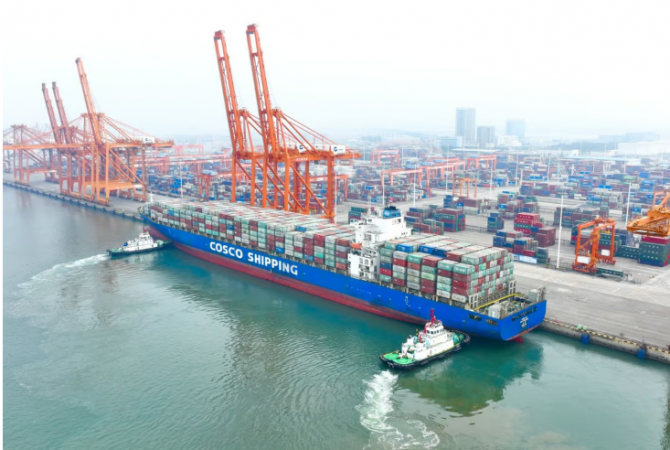
BEIJING: China's exports posted their biggest year-on-year decline in December, analysts said, adding that they are expected to see further declines in the coming months after the sudden and chaotic reopening of the Wuhan lockdown in early 2020. contraction is expected.
According to customs data released on Friday, exports decreased by 9.9% last month compared to the same period last year, reaching US$306.08 billion. It marked the end of the country's pandemic-driven export boom and a third consecutive month of decline.
According to Capital Economics economists Jichun Huang and Julian Evans-Pritchard, "This has been attributed to weak global demand for Chinese goods, as well as some disruption in logistics networks and labor shortages to re-supply goods amid a wave of infections." May go."
Also Read: india likely to become usd7 tn economy in 7 years
Shipments to both the United States and the European Union fell sharply by 19.51 and 17.5%, respectively, from a year earlier.
According to Huang and Evans-Pritchard, exports could continue to "contract through the middle of the year" despite the fact that supply-side disruptions are easing as labor shortages ease amid a decline in infections. This is because growth outside China is still sluggish.
As the primary engine of the economy in 2023, growth in domestic demand is critical, according to Zhang Zhiwei, president and chief economist at Pinpoint Asset Management.
According to Zhang, "More policies to boost domestic consumption are anticipated by the market. So far, aggressive policy changes in the real estate and internet sectors have boosted confidence in those industries."
Also Read: World bank weighs in on transition amid weak global economy
But local governments, not the federal government, typically launch helpful policies in the consumer space. That could change when the new administration takes office in March.
In contrast, imports declined 7.5% to US$228.07 billion in December from a year earlier, more than a 10.6% decline in November, according to customs data.
According to economists at Goldman Sachs, a fall in commodity prices contributed somewhat to the fall in import prices.
According to Huang and Evans-Pritchard, imports, as opposed to exports, are more likely to recover in the coming months as a result of China's reopening, although January's trade data may mask a slowdown in domestic activity as it includes goods and services. it takes time. China trip.
"A rapid recovery in domestic demand that will prop up imports will be driven by the rapid fading of virus disruptions as China adjusts to living with COVID-19, along with broad policy support," he added. .
China's overall trade surplus stood at US$78.01 billion in December, up from US$69.84 billion in November.
China's total trade increased to US$6.3 trillion last year, up 4.4% from the previous year.
According to the trade data, exports are expected to increase by 7% to US$3.6 trillion in 2022, while imports are expected to increase by 1.1% to US$2.7 trillion.
In contrast, China's trade surplus in 2022 was US$877.6 billion.
Also Read: PIF: Saudi investment company ups its ownership of Nintendo to 6%
China's trade with Russia grew the most among all its major trading partners last year, rising 29.3% to US$190.3 billion, mainly due to Chinese imports of Russian goods.
The European Union, the US and the Association of Southeast Asian Nations remain China's top trading partners in 2022.